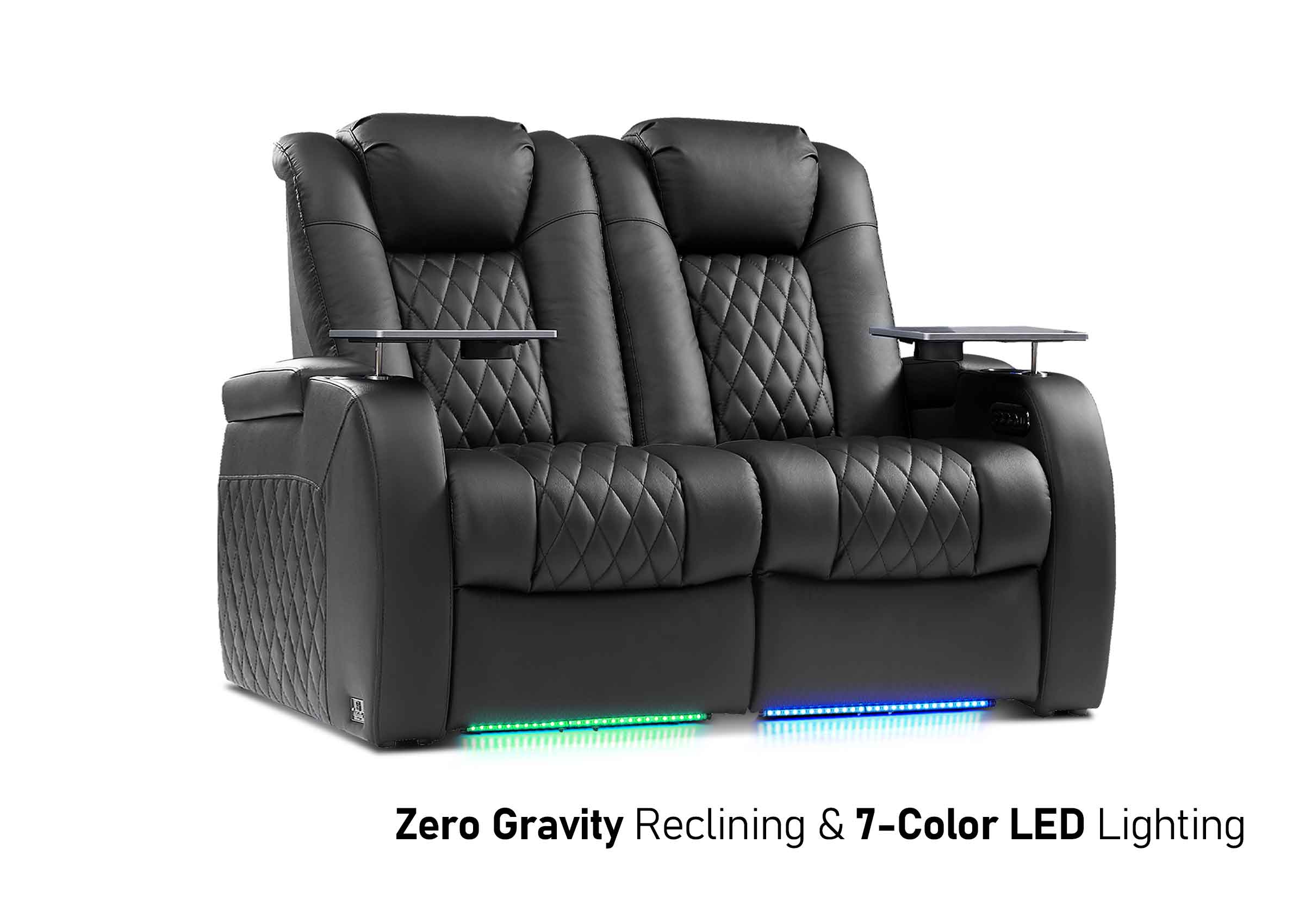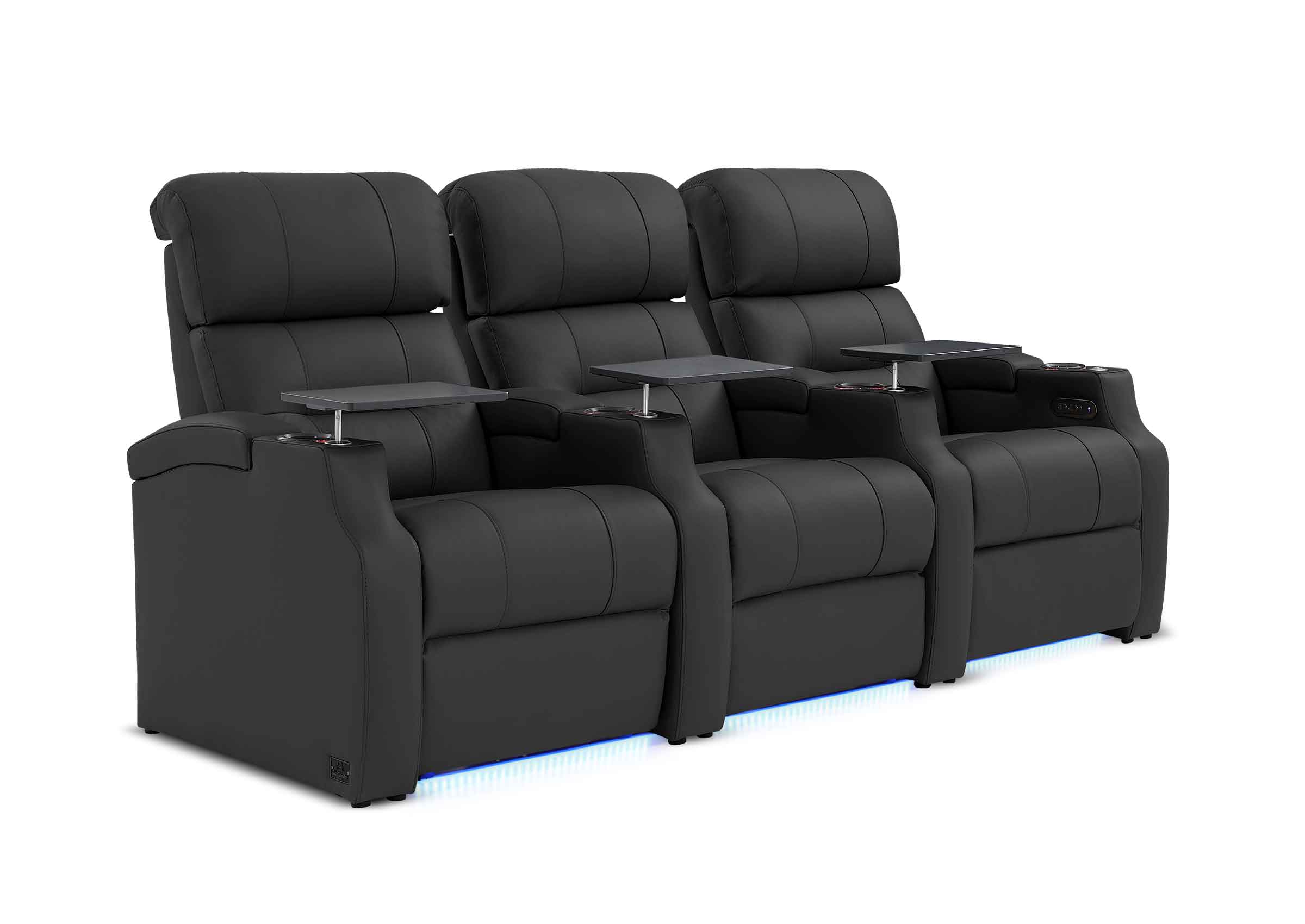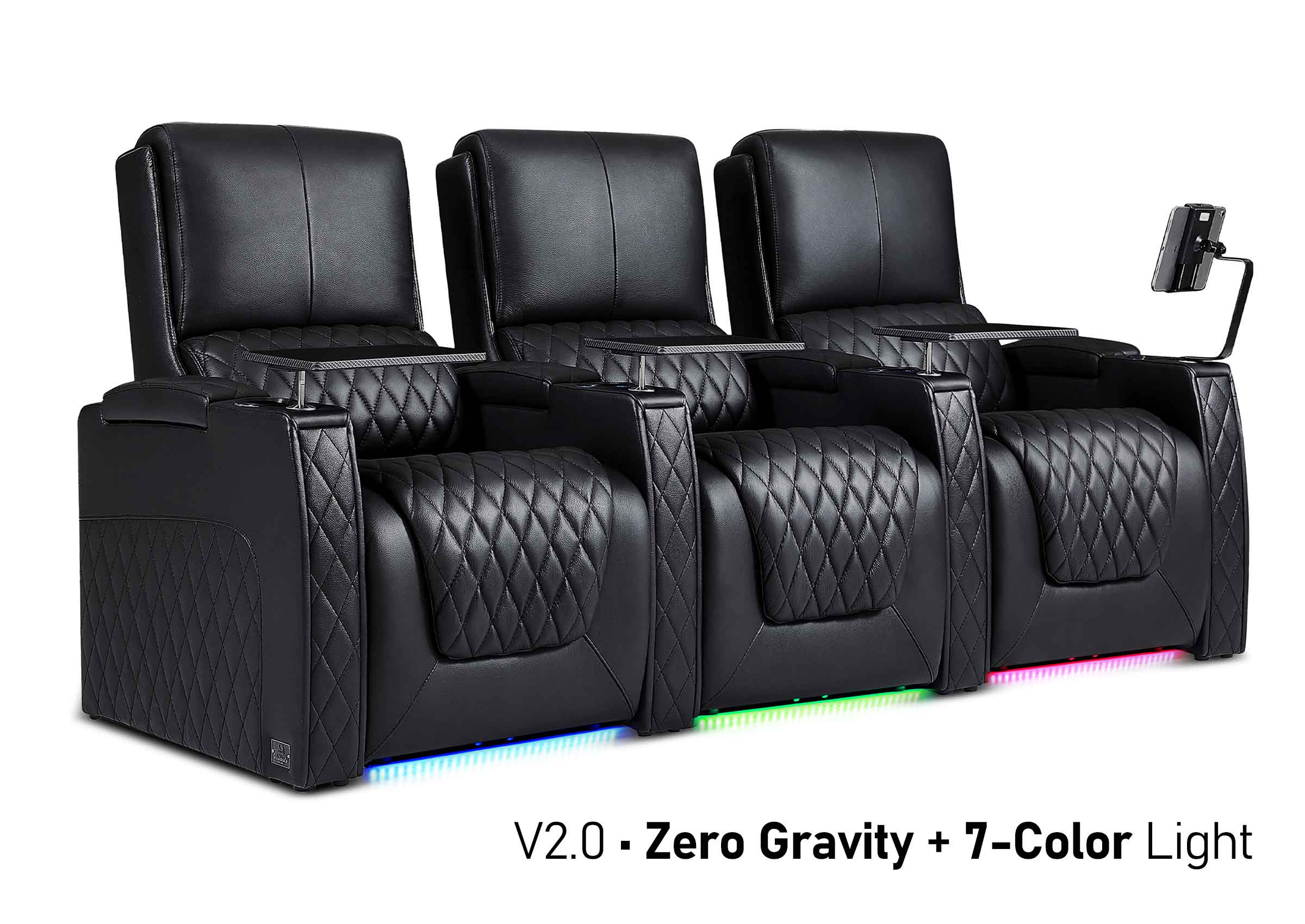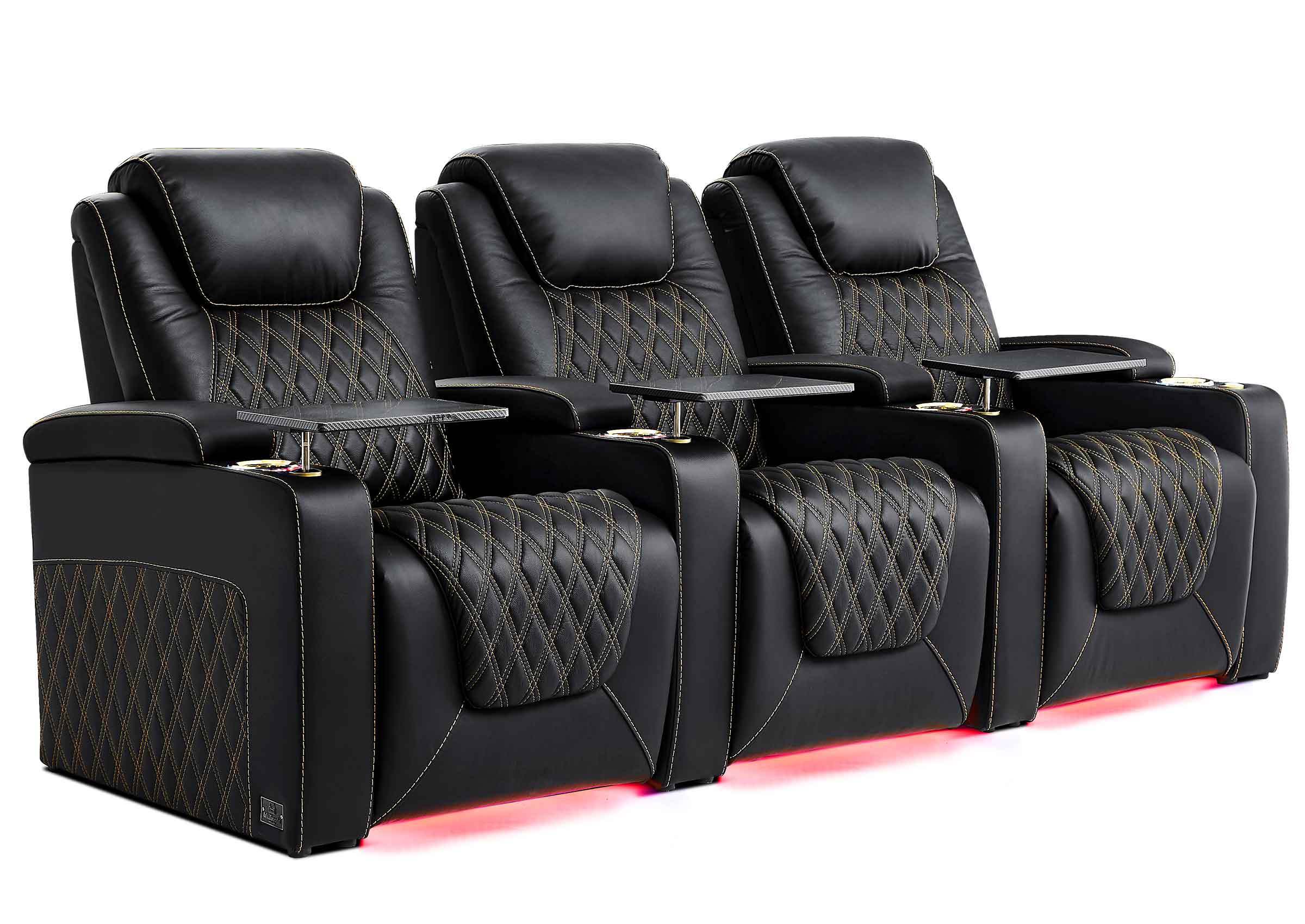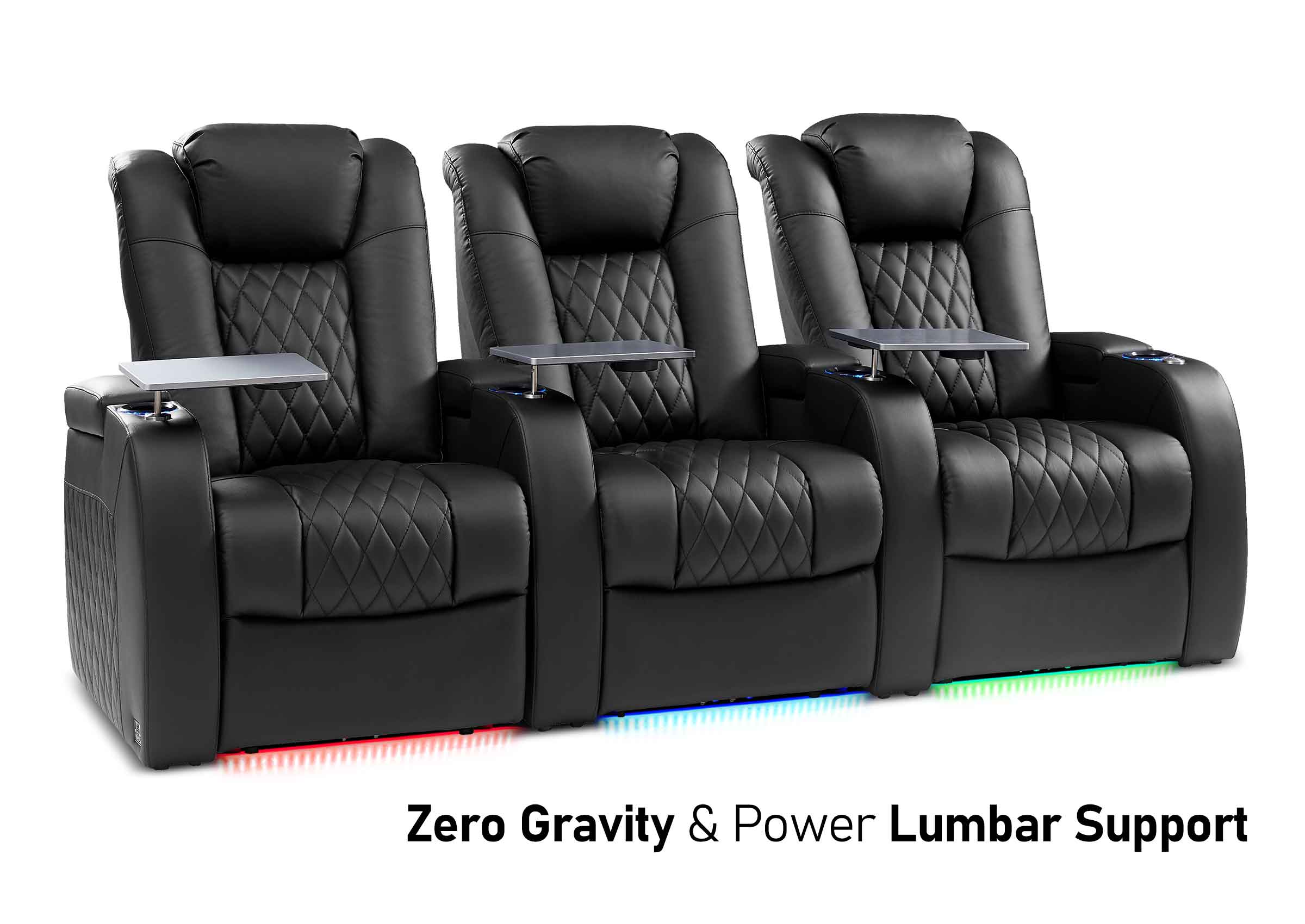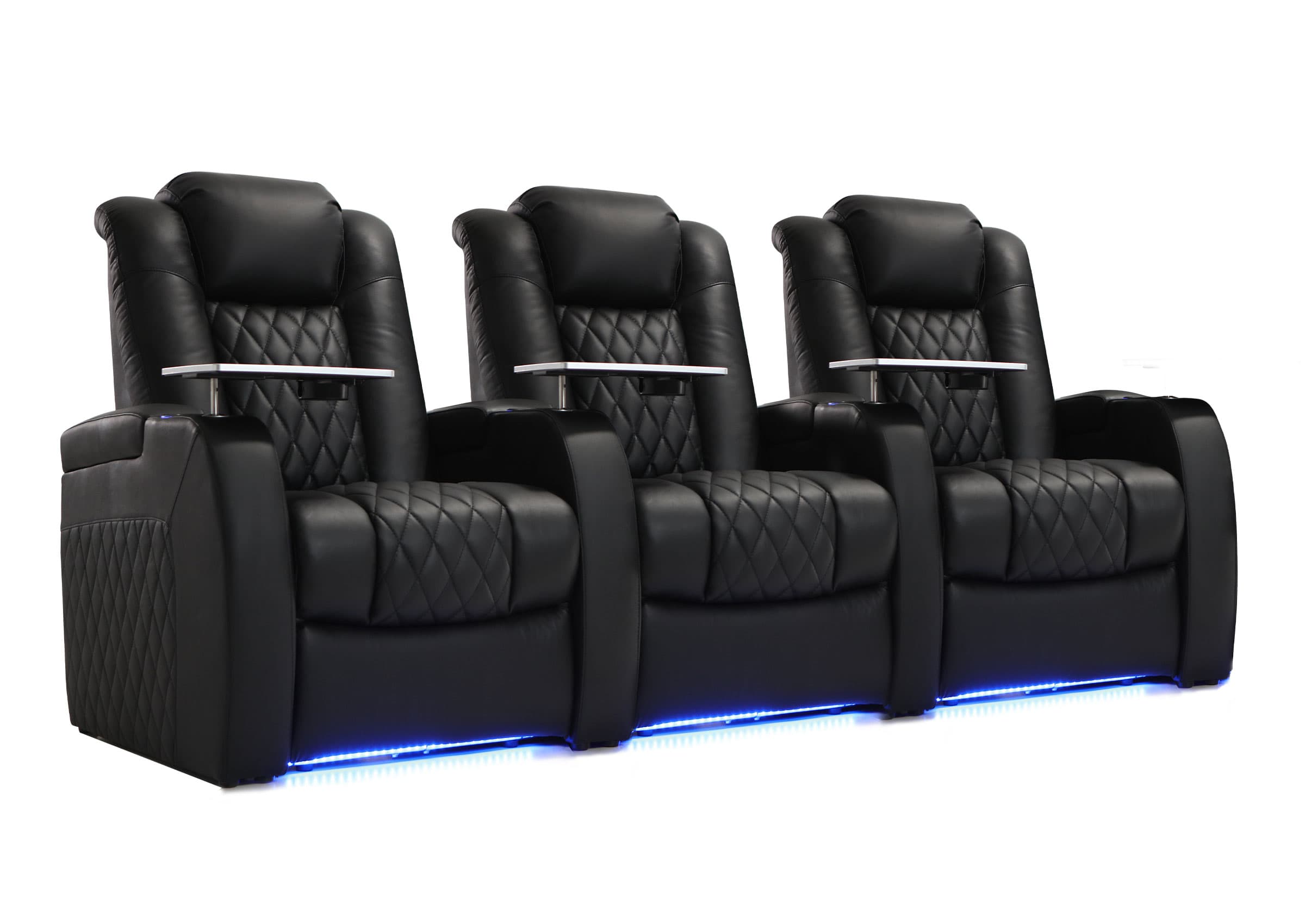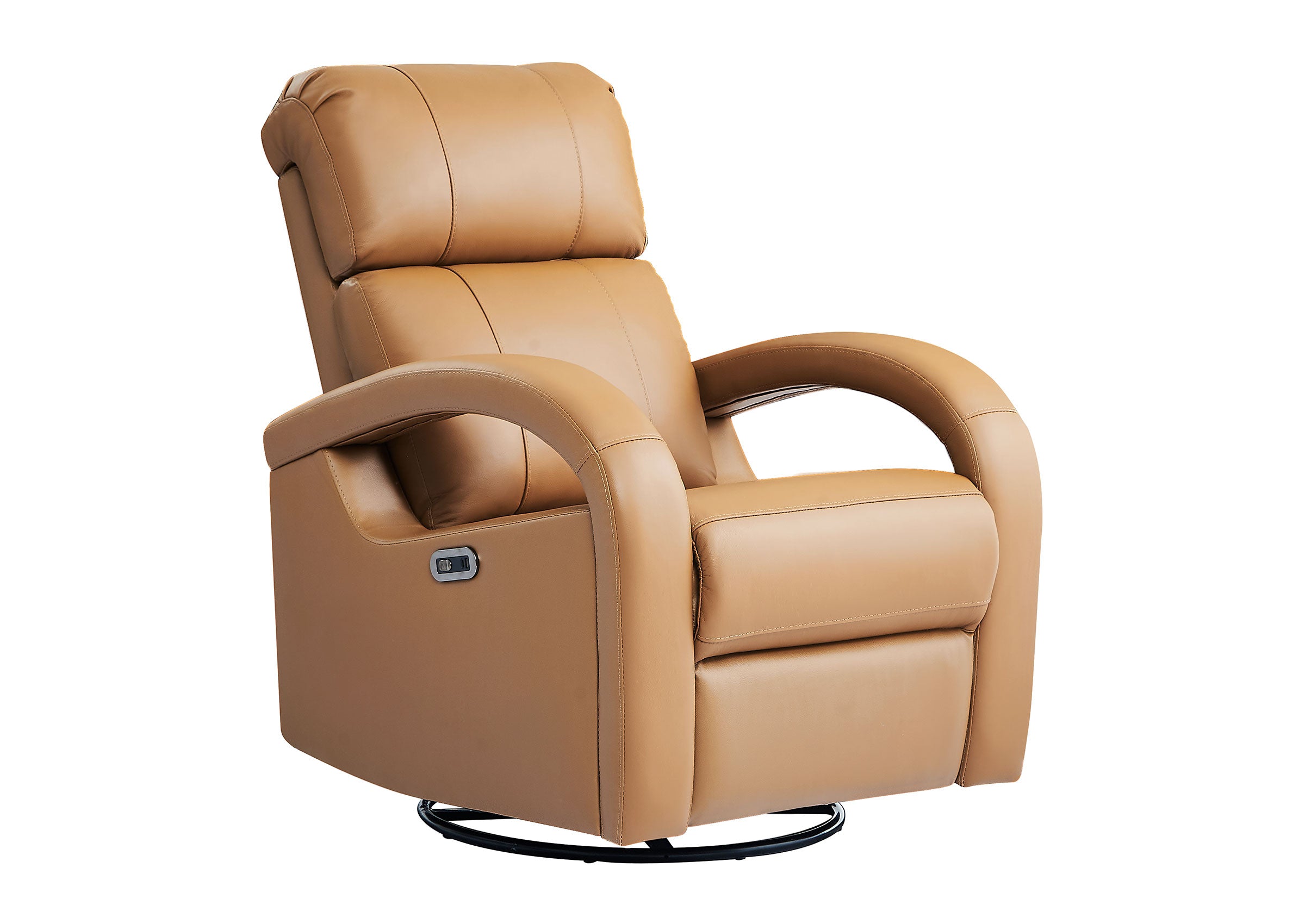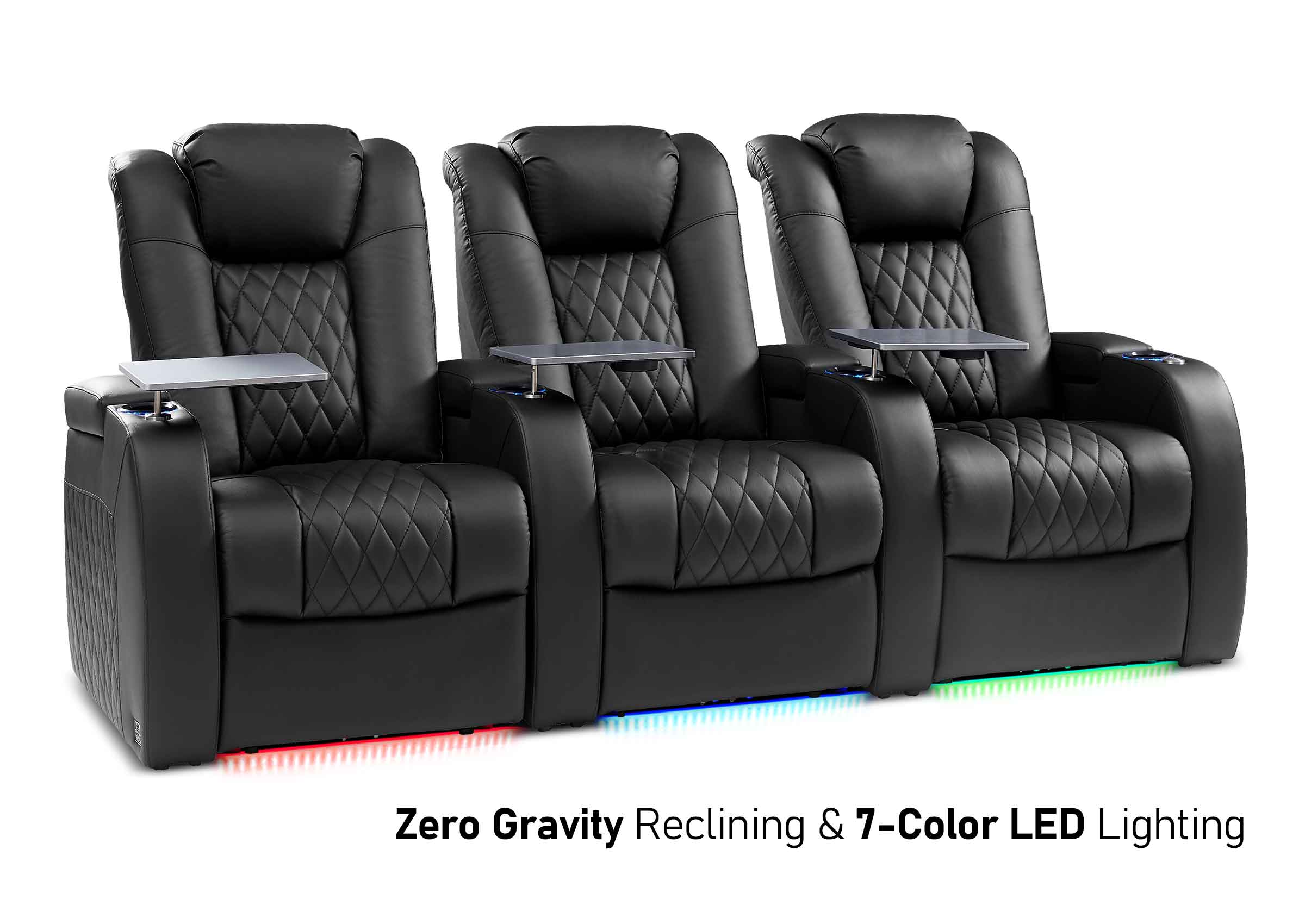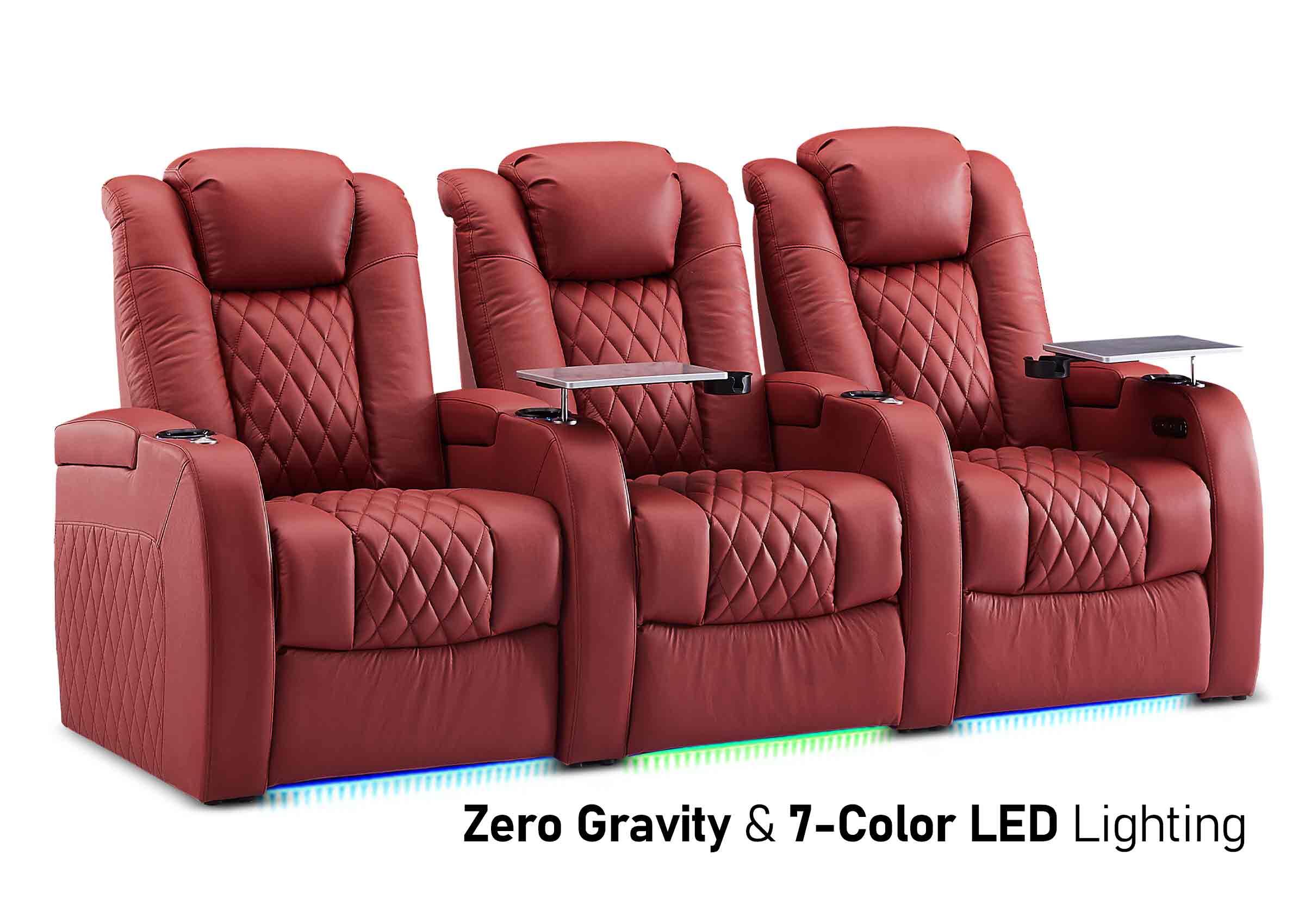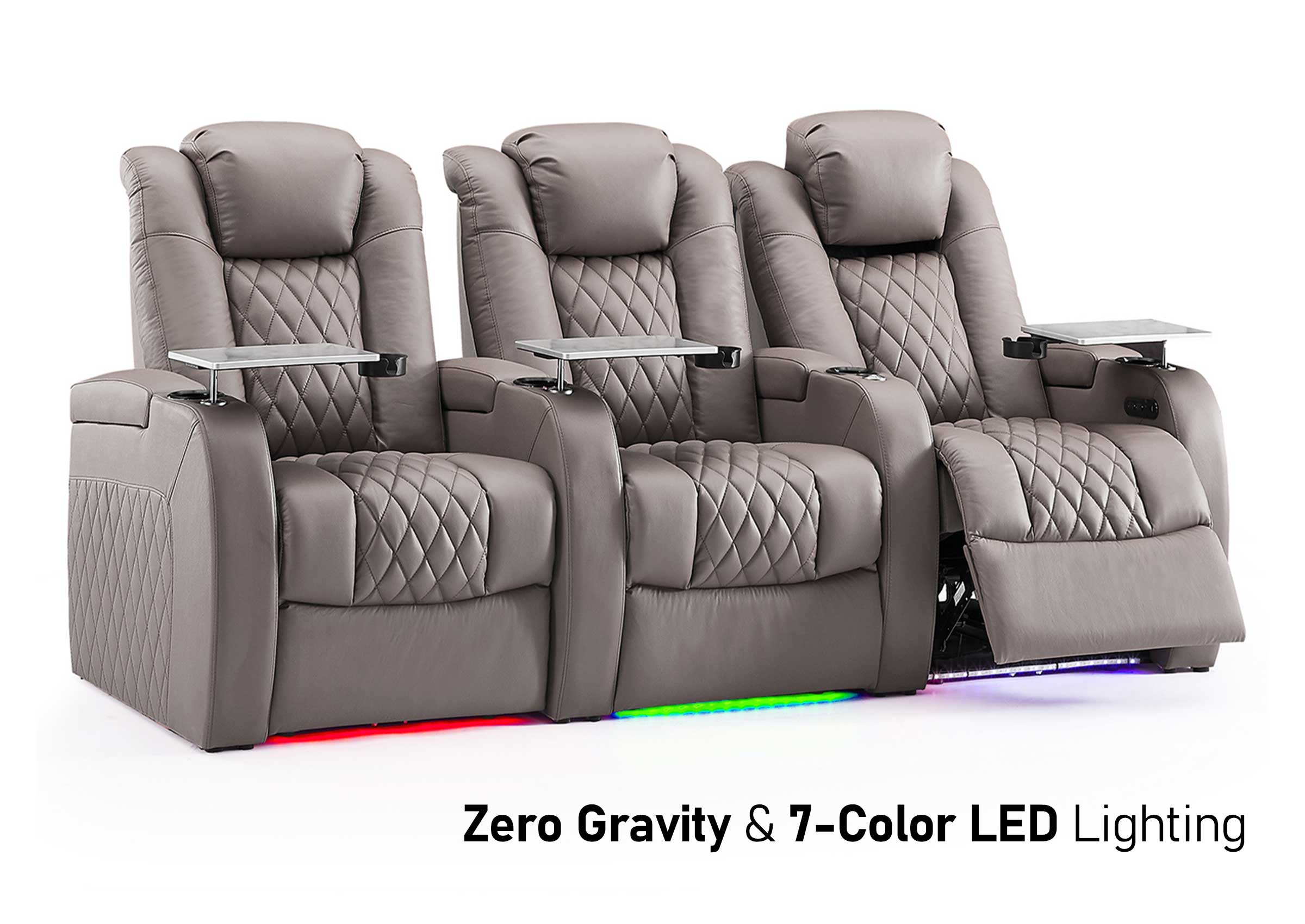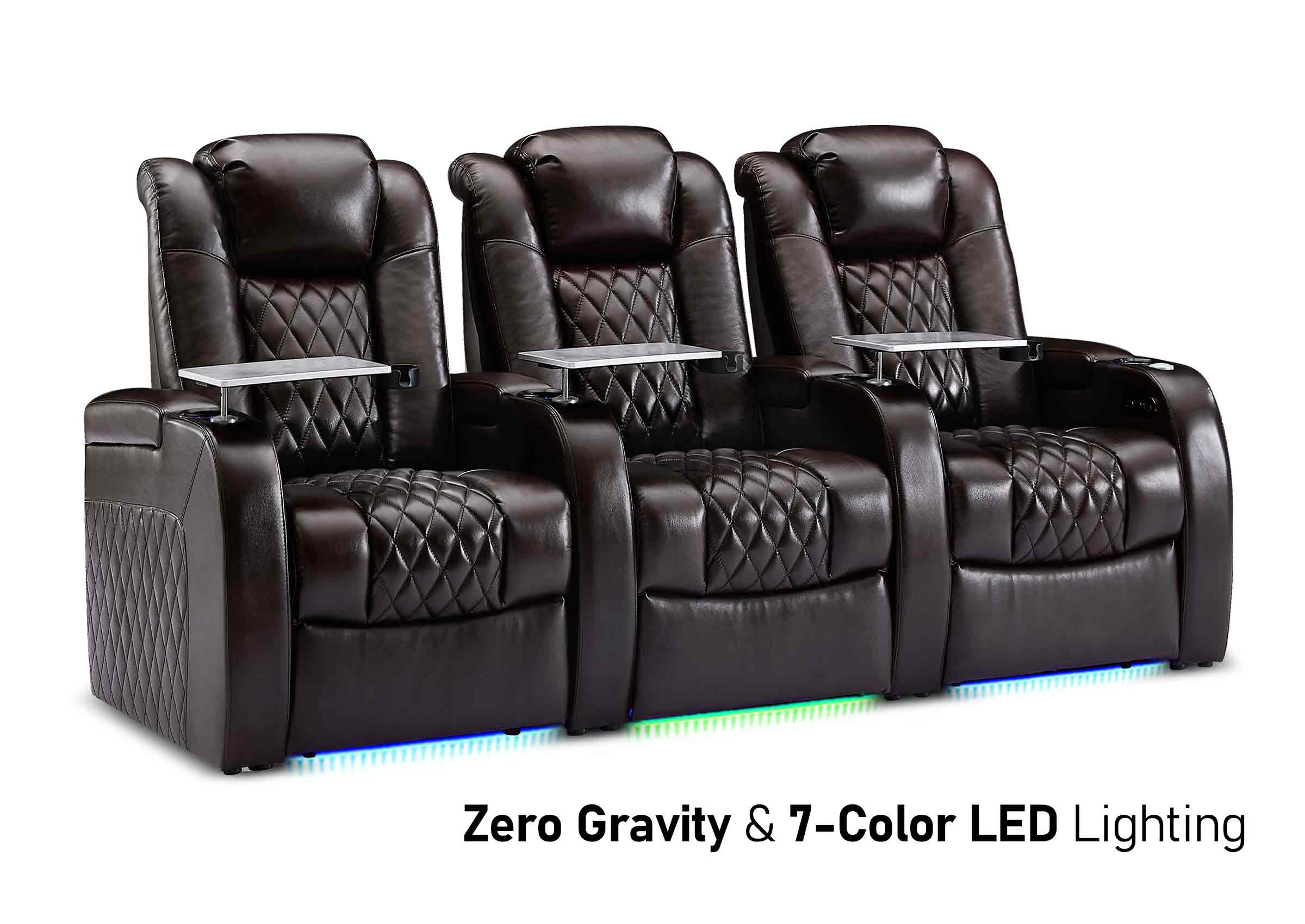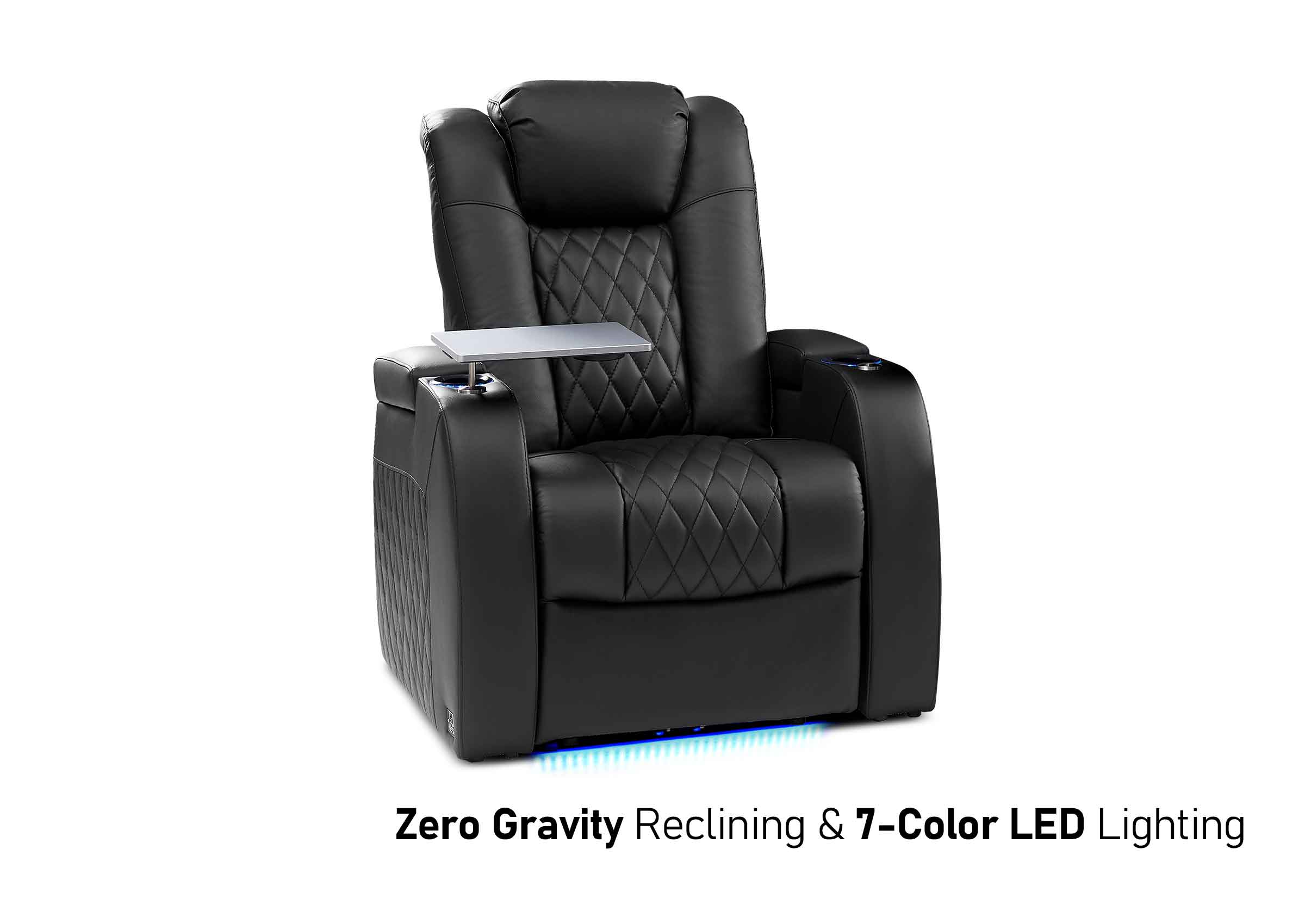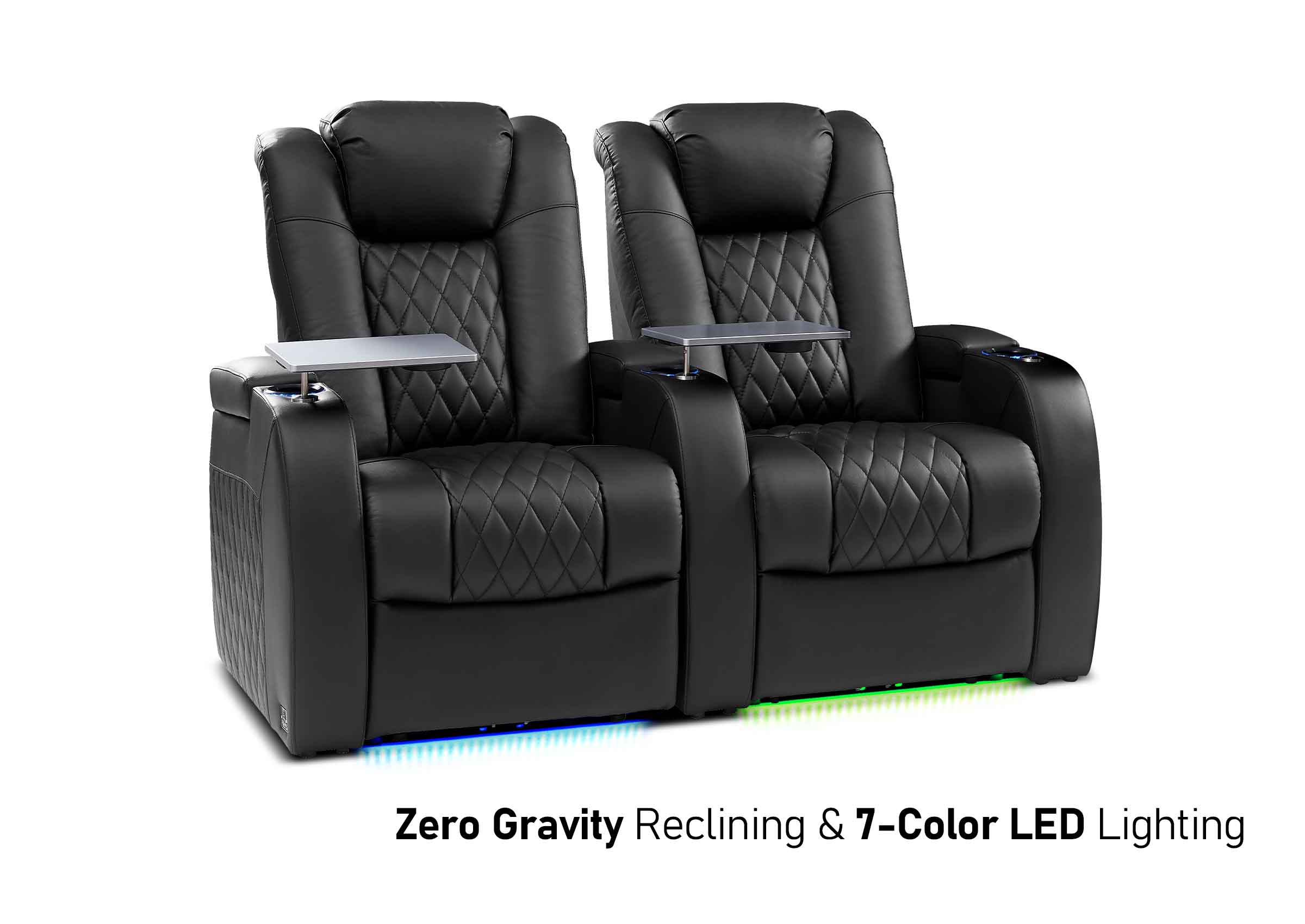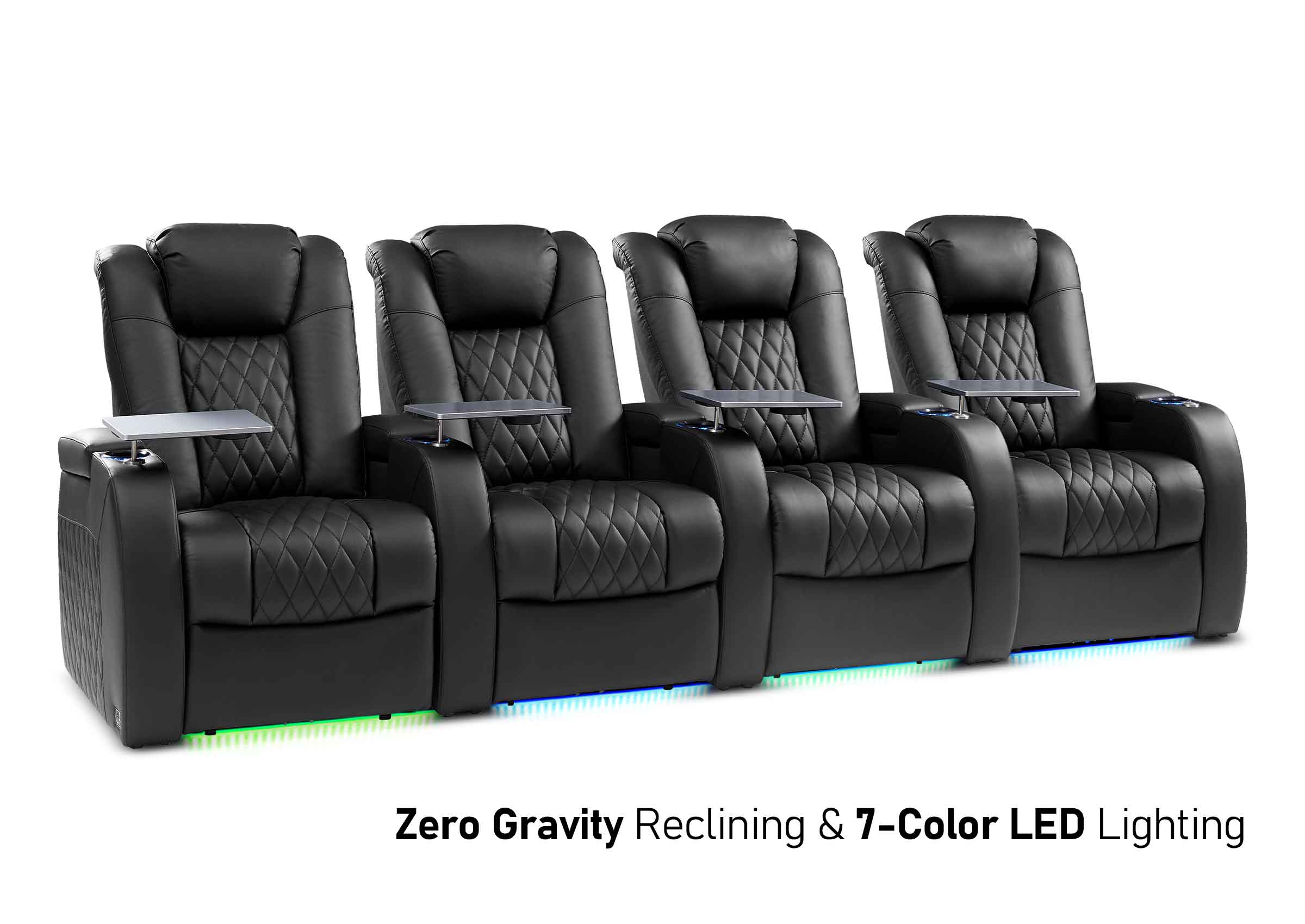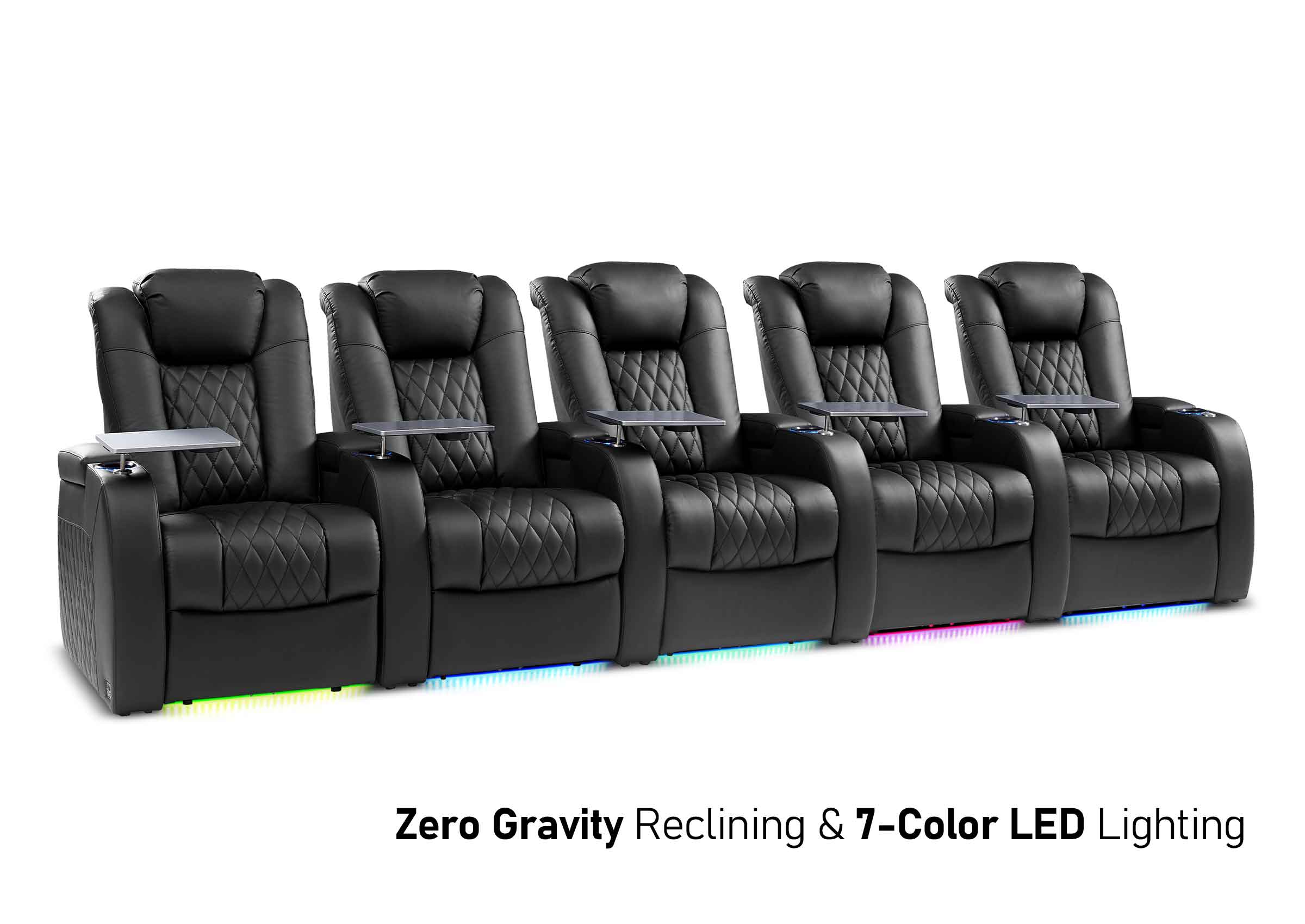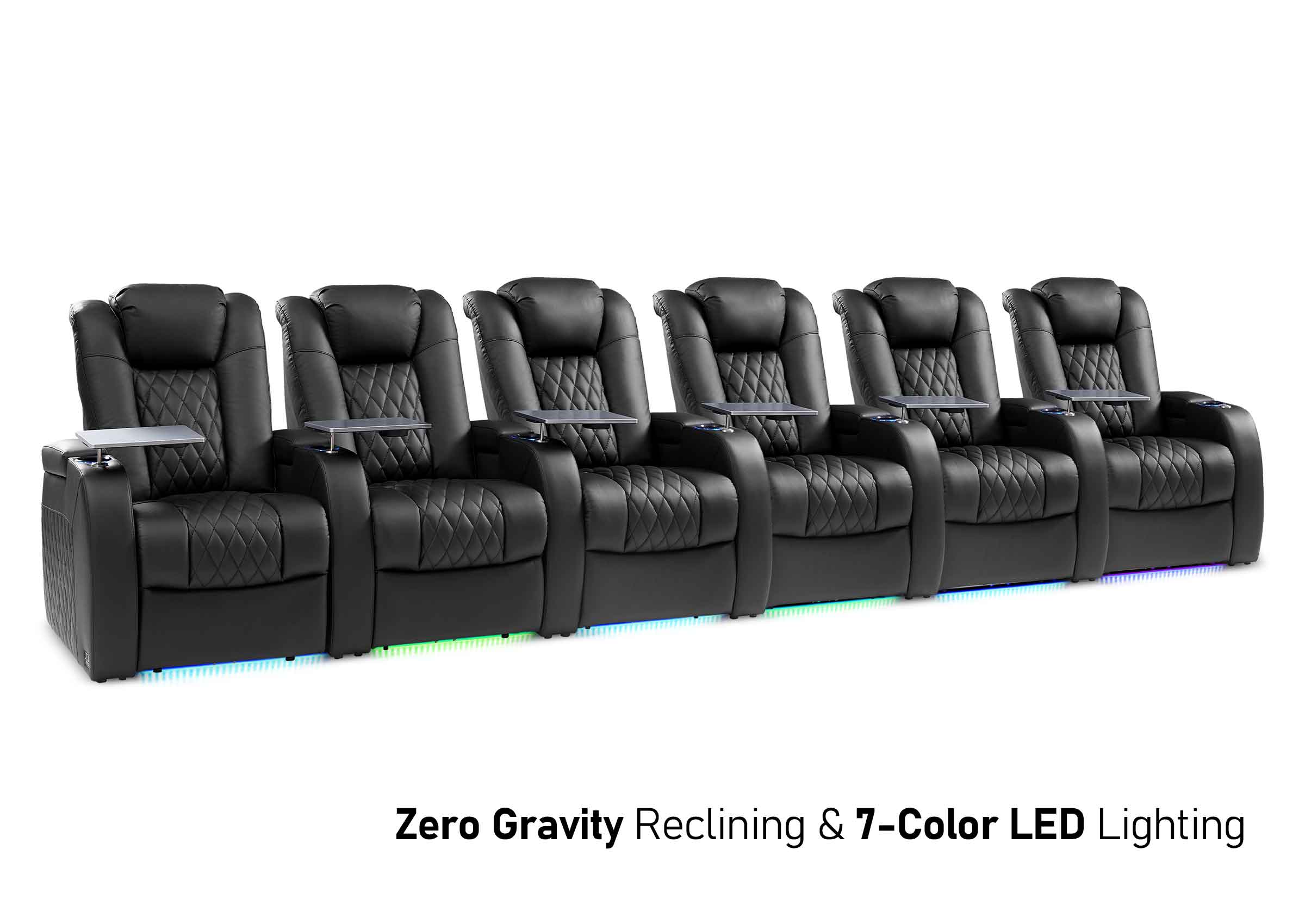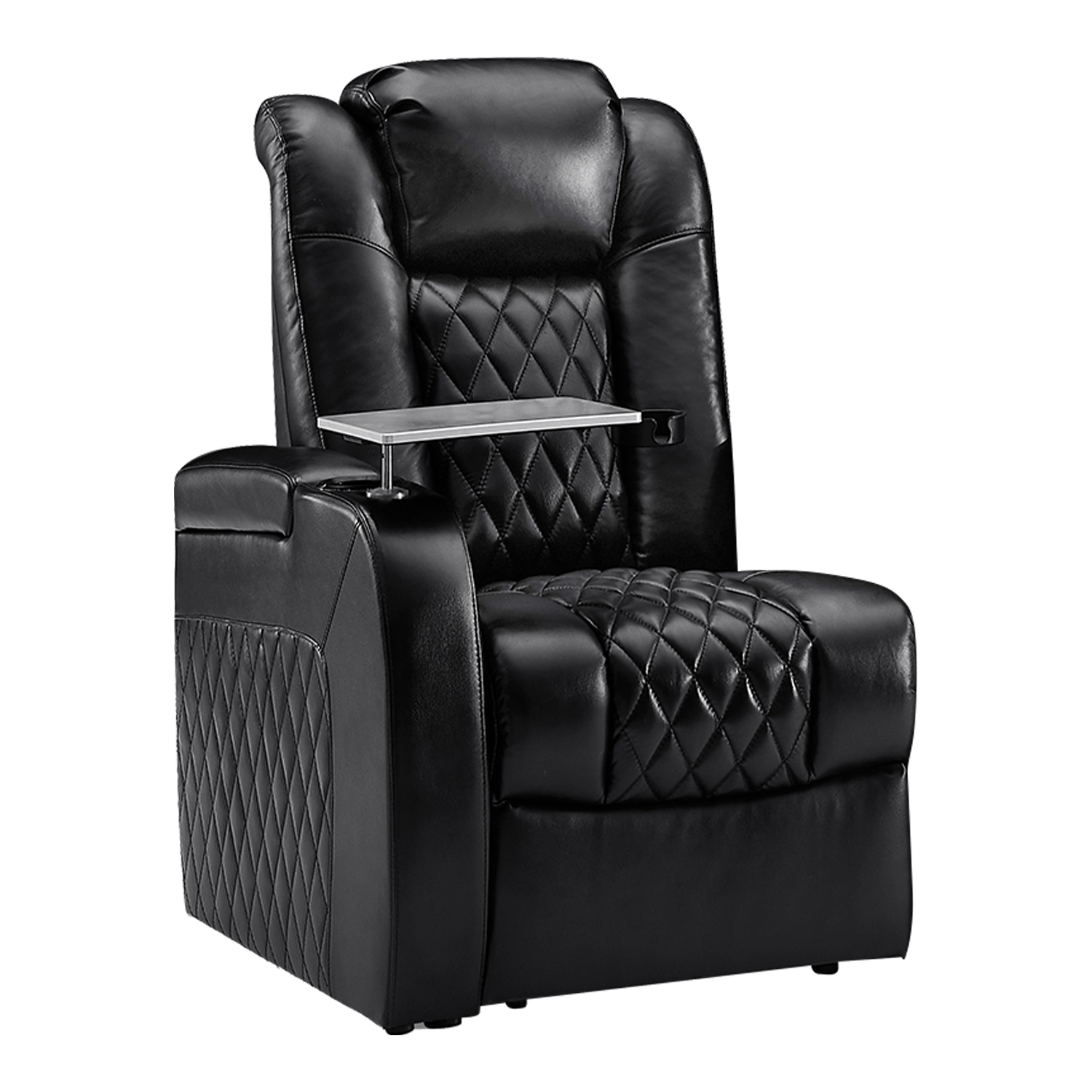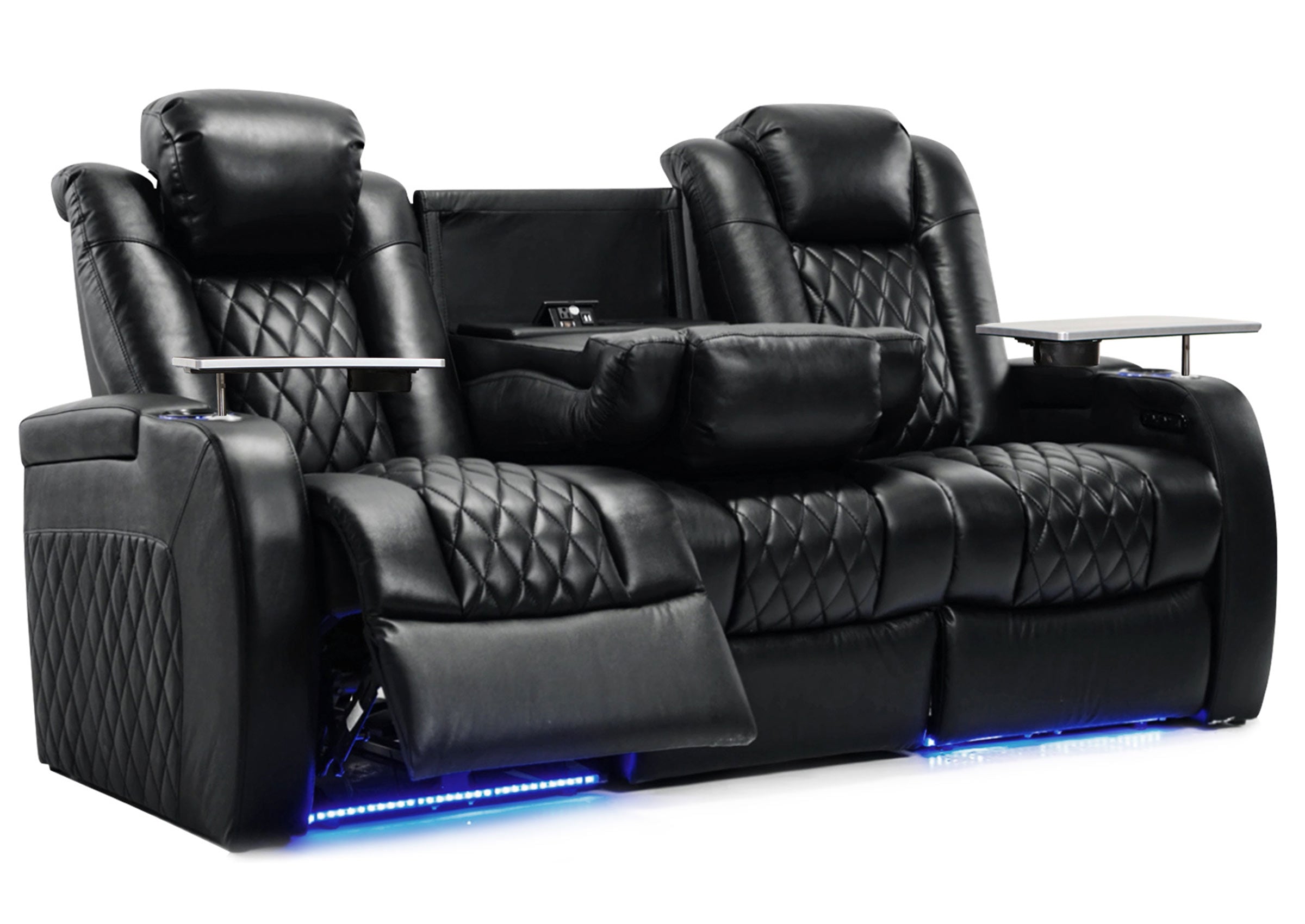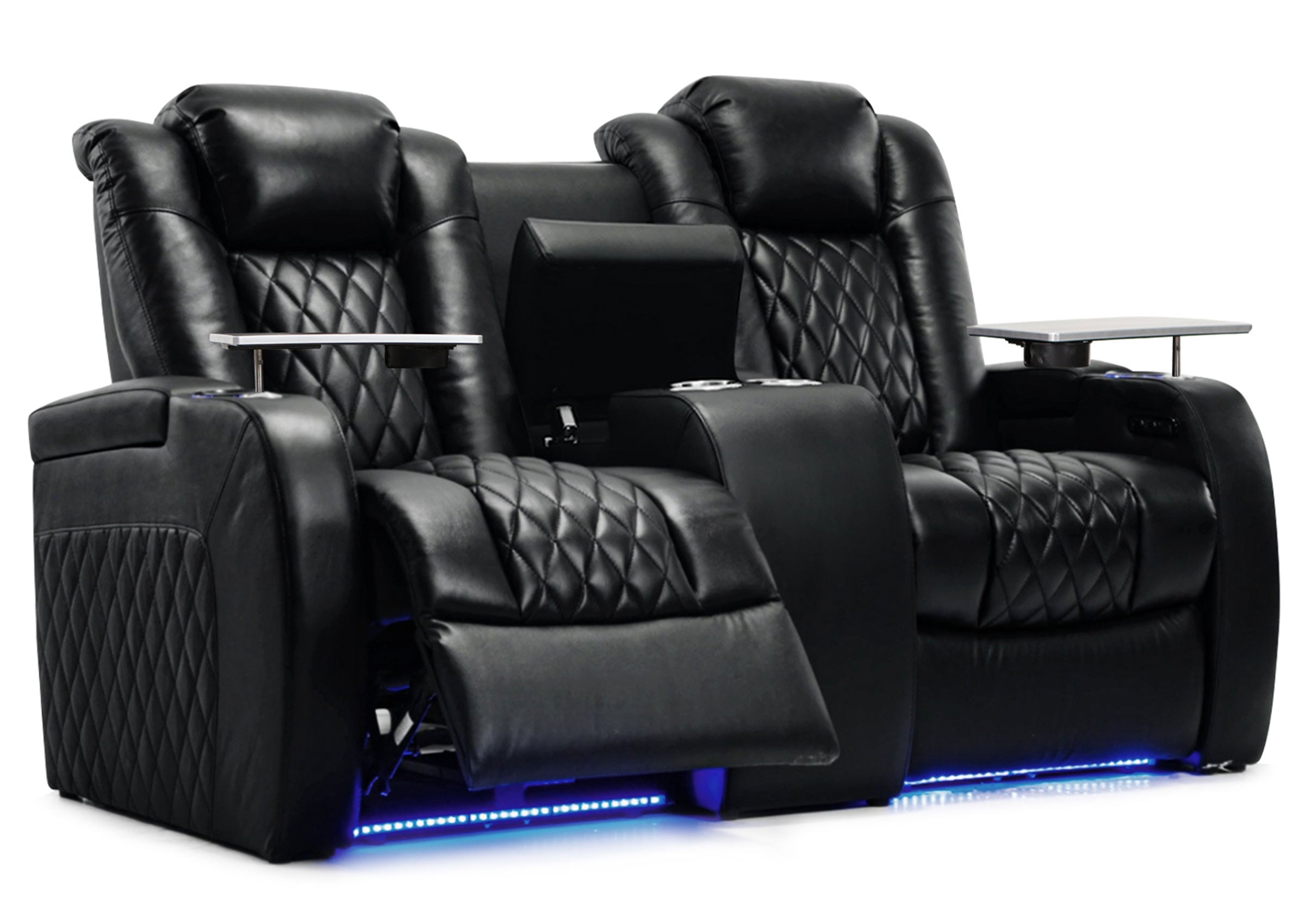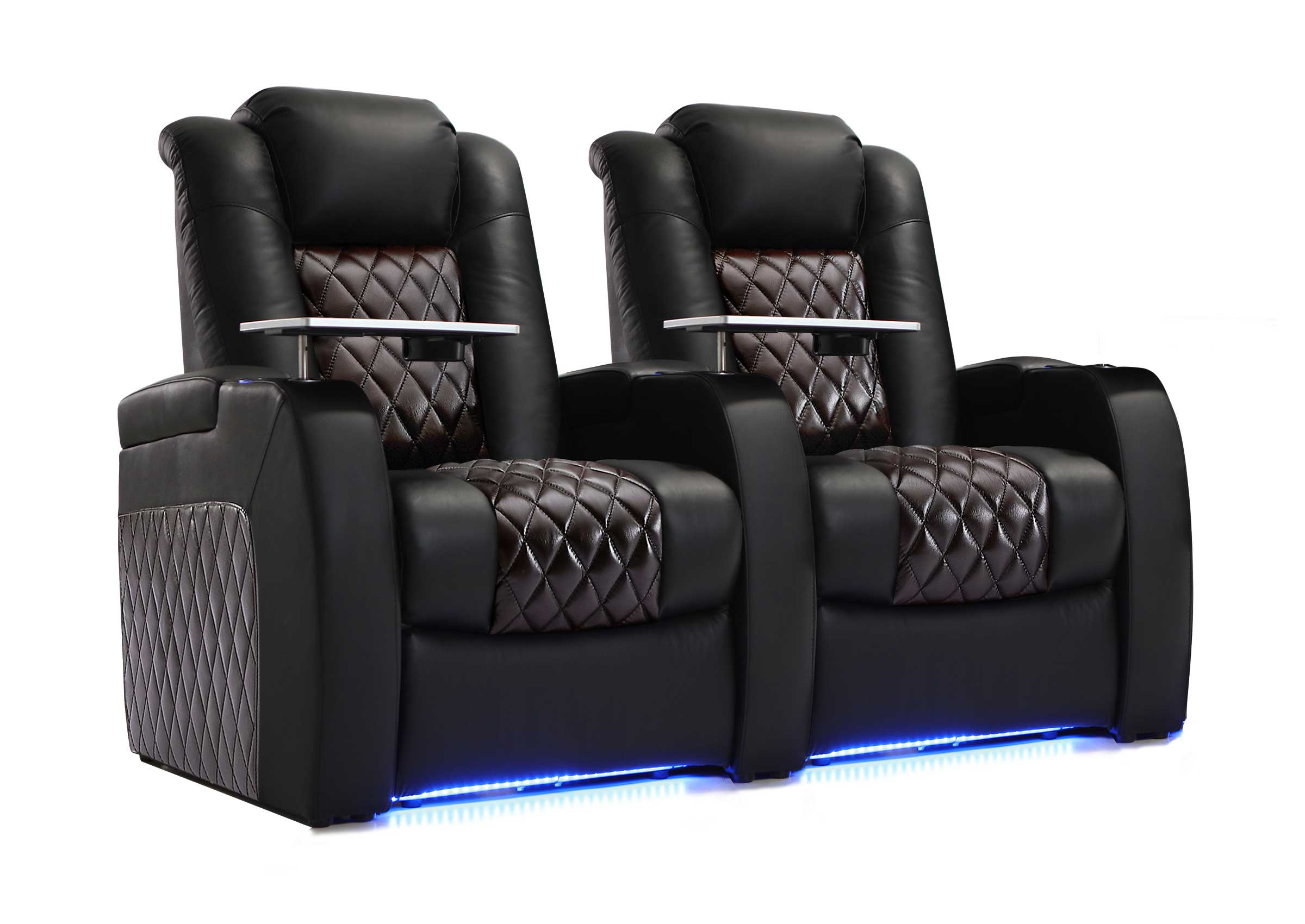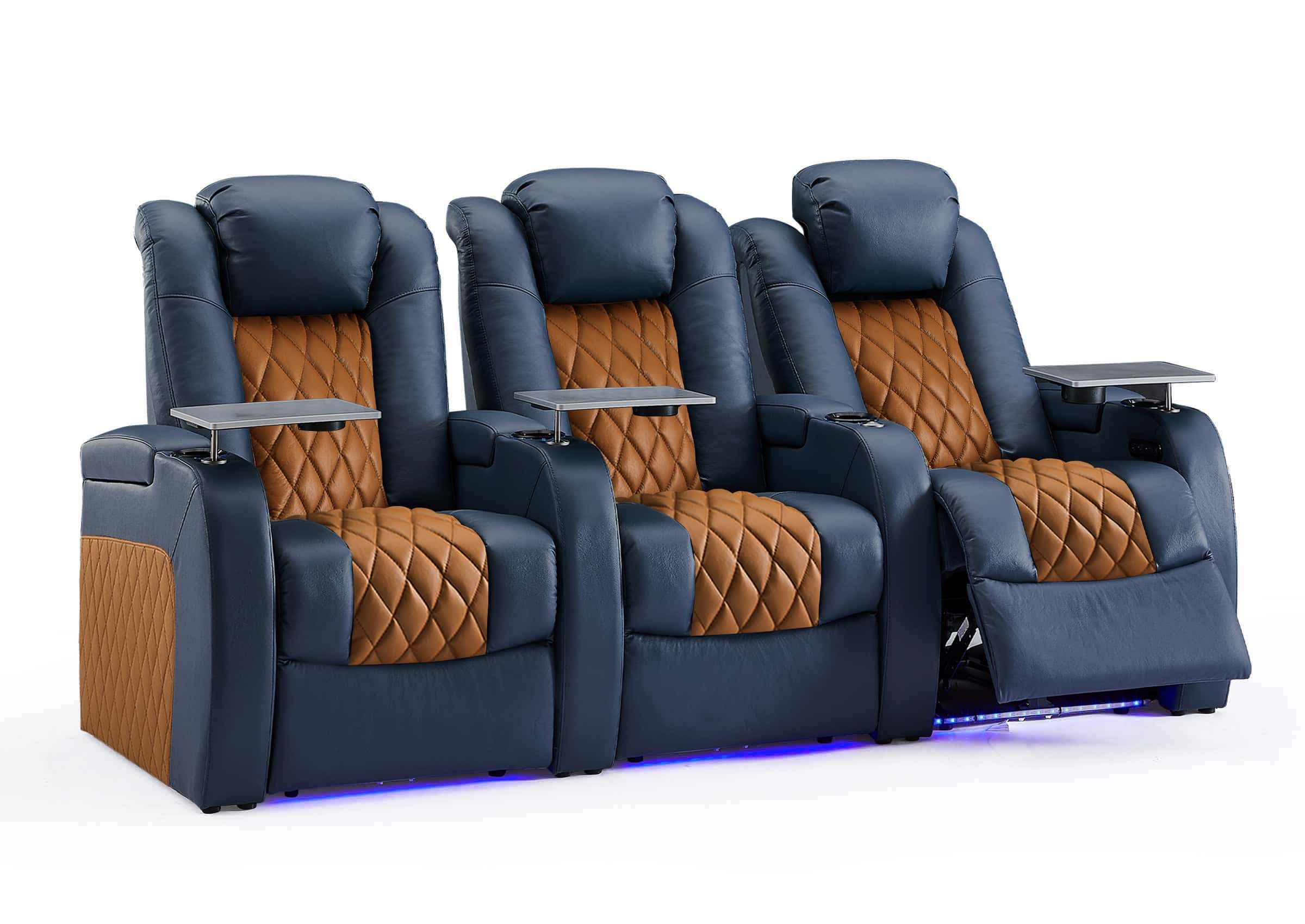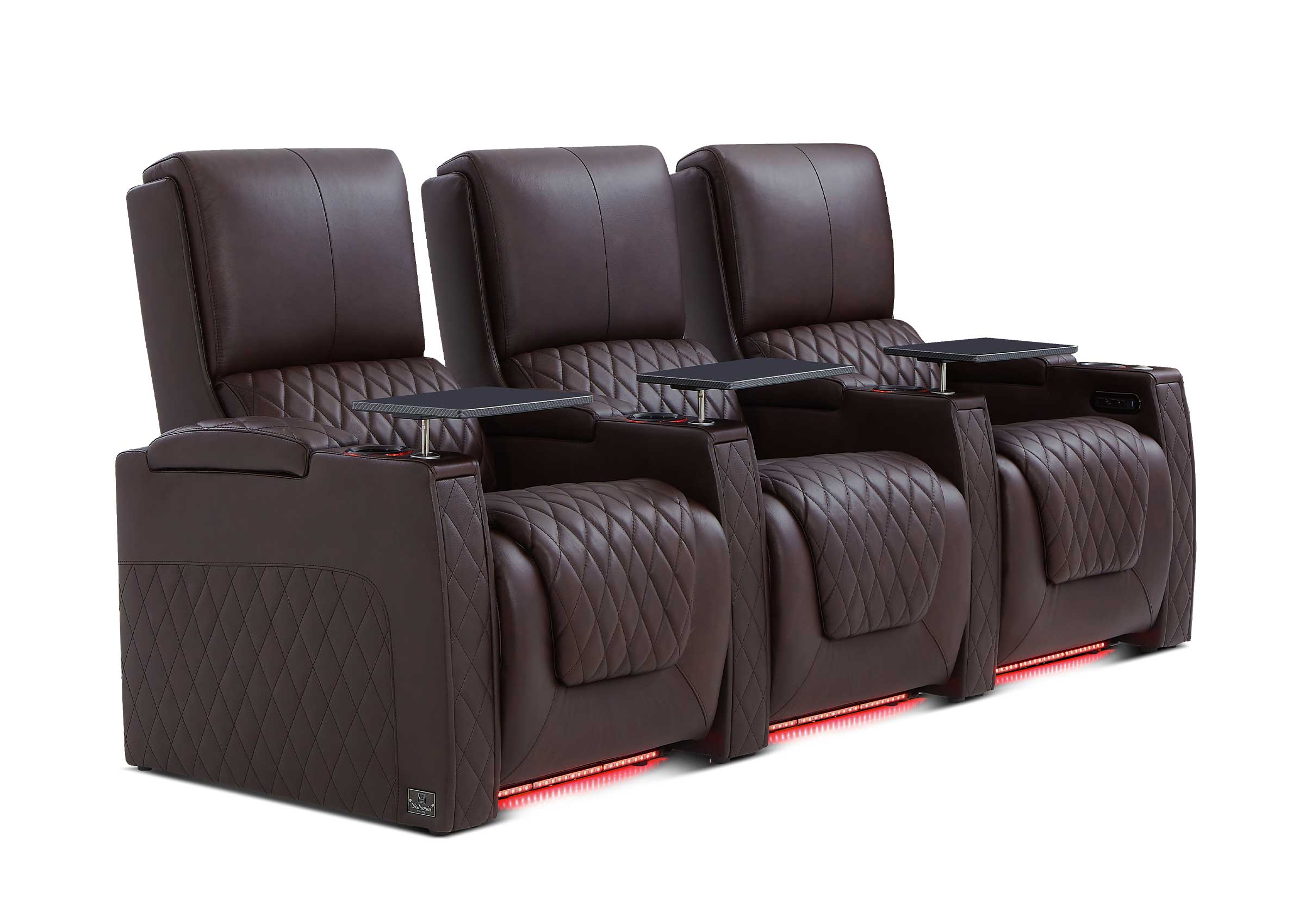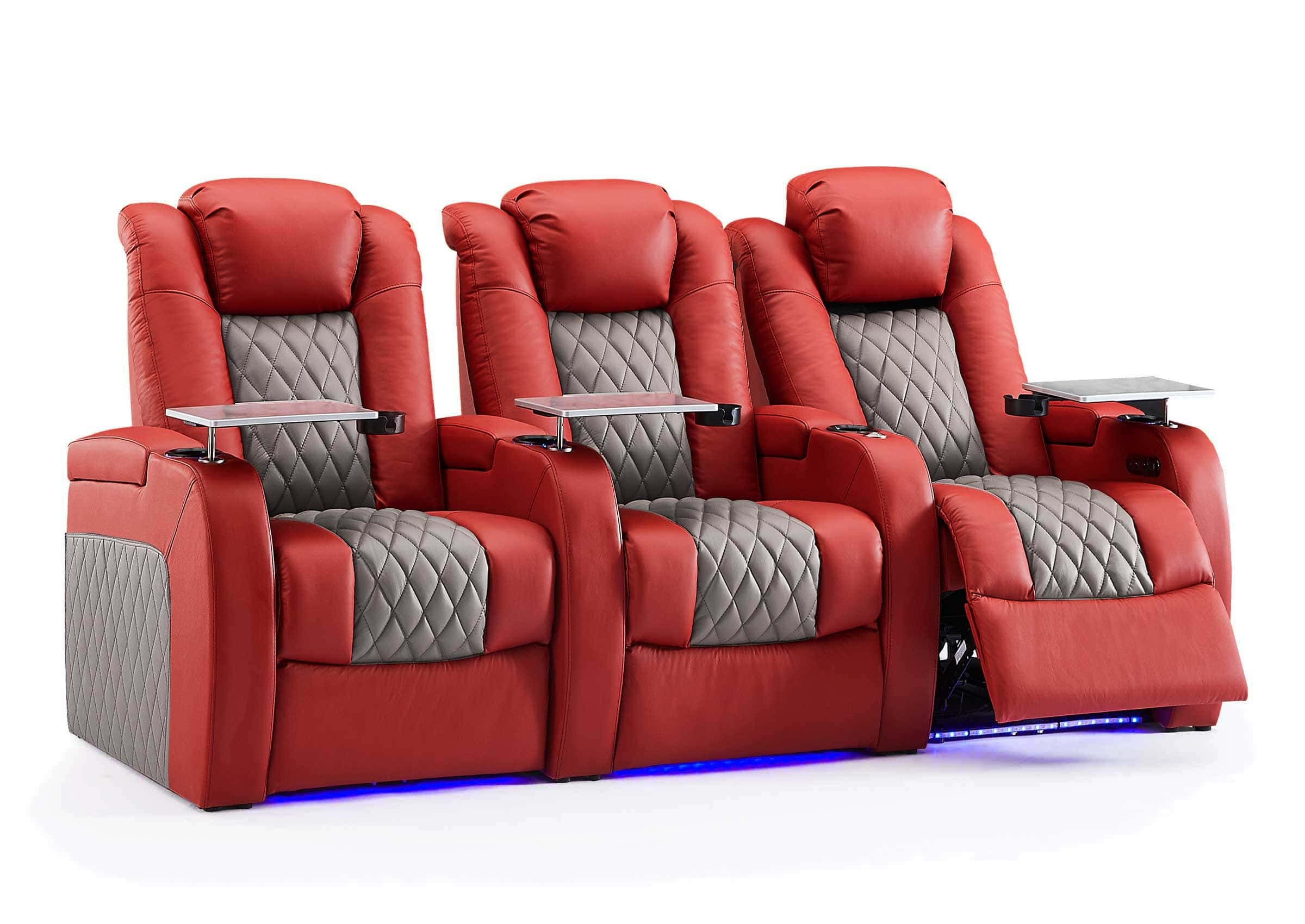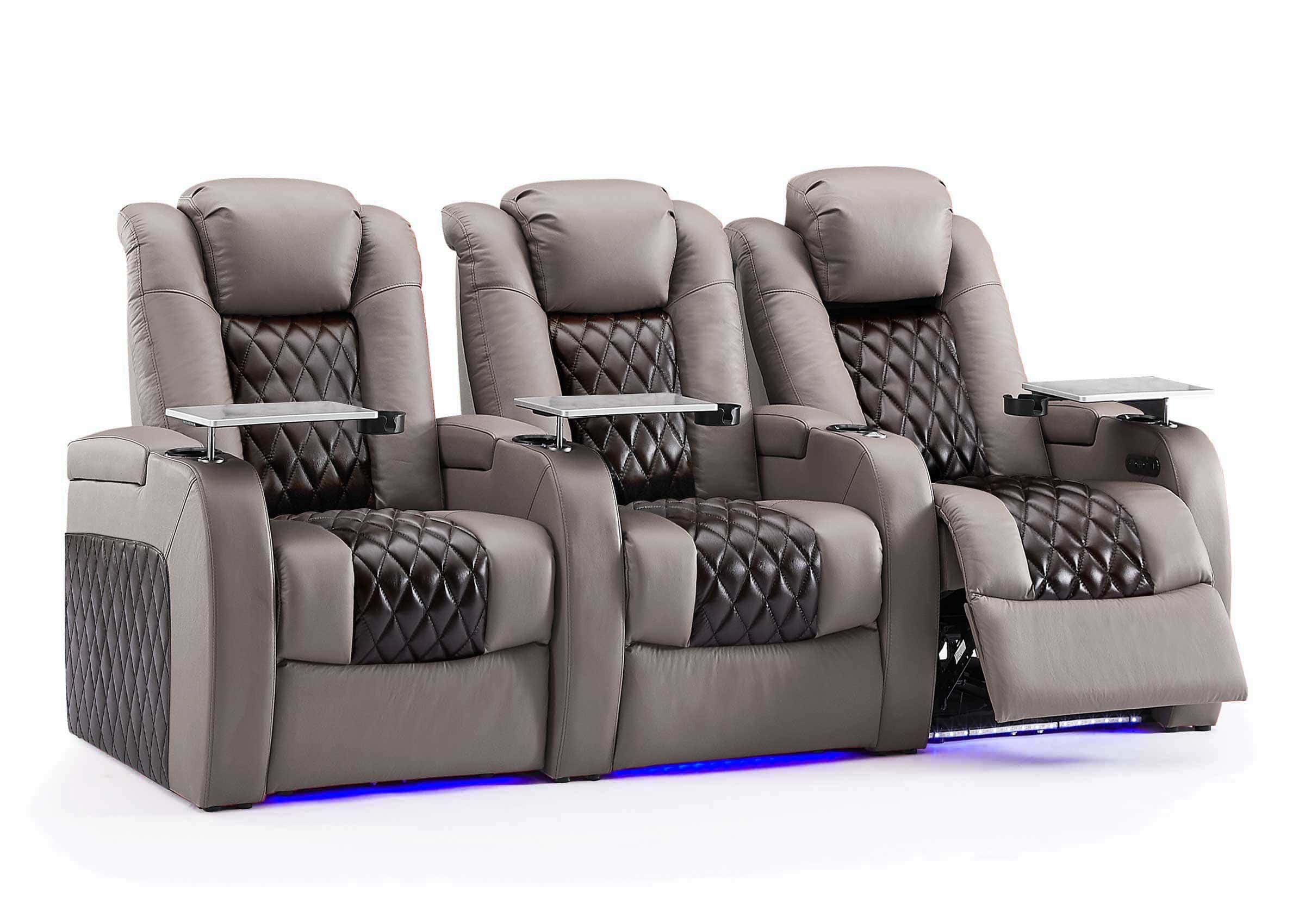Choosing the right seating for your home theater is a decision that goes beyond mere aesthetics. Two of the most popular materials in home theater seating are leather and fabric. Whether you're outfitting a new space or upgrading an existing one, understanding these materials can help you make an informed choice that enhances your viewing experience.
How leather compares to fabric for home theater seating? Let's find out together!

Comfort
Leather seating, with its distinctive supple texture, naturally regulates temperature-feeling pleasantly cool to the touch in hot weather and retaining warmth when it's cooler. This adaptability enhances comfort in varying climates, making leather seats ideal for year-round enjoyment. Over time, leather uniquely molds to the contours of a user's body, enhancing the seating comfort through personalized shaping. This material's ability to age with the user adds an element of bespoke luxury that few other materials can offer.
In contrast, fabric chairs are renowned for their immediate comfort. Upon first use, they provide a welcoming softness that many find more inviting than the initially firmer feel of leather. Fabrics such as plush velvets and soft wool blends offer a tactile diversity that can enhance sensory enjoyment. Moreover, fabric's superior breathability plays a crucial role in comfort, particularly in warm environments. This breathability prevents the build-up of heat and moisture, making prolonged seating markedly more comfortable.

Durability
Leather's reputation for durability is well-founded, with high-quality pieces often outlasting their fabric counterparts by several decades. The resilience of leather to common damages like spills and stains is notable; a simple wipe can often restore it to its original condition. Despite this, leather is not impervious to wear. It can show scratches and requires regular conditioning to maintain its elasticity and prevent surface cracking.
Fabric's durability, on the other hand, is largely dependent on the type of weave and the quality of the material used. Fabrics with tight weaves and high thread counts generally offer better durability and longer life. Certain fabrics are also treated with synthetic finishes to repel stains and resist water damage, enhancing their longevity. However, these treatments can vary in effectiveness and might require regular reapplication to maintain their protective qualities. Regular cleaning and careful use are more crucial with fabric to avoid permanent staining and wear, reflecting a maintenance commitment that leather does not necessitate.
Appearance and Style
Leather seating enhances the aesthetic of any home theater with its classic and sophisticated appearance. Its ability to integrate seamlessly into various interior designs, from modern minimalism to traditional richness, is a testament to its versatility. Leather comes in an array of colors, from stark black and rich browns to bold reds and subtle creams, each capable of commanding its own presence in a room. Over time, leather develops a patina-a gentle sheen produced through aging and handling-that adds depth and character to the furniture, often seen as a marker of quality and elegance.
Fabric seating, by contrast, offers unmatched opportunities for customization. With choices ranging from understated monochromes to vibrant, intricate patterns, fabric allows for personal expression in home theater design. This variety enables homeowners to either complement the existing decor or make a bold statement with contrasting styles. Despite these benefits, fabric's susceptibility to fading can be a drawback, particularly in sunlit rooms, where prolonged exposure to UV light can diminish the vibrancy of the material.

Maintenance
Leather is the clear frontrunner in terms of ease of maintenance. Its smooth surface does not trap dirt and debris, making cleaning simple and efficient. For everyday upkeep, a quick wipe with a damp cloth can remove most surface dirt. Periodic conditioning keeps the leather supple, preventing cracks and tears associated with dryness. These simple steps can significantly extend the life and beauty of leather furniture.
Fabric seats, while cozy and stylish, demand more intensive care. They are prone to absorbing spills, which can lead to stains that are stubborn to remove. Professional cleaning might be necessary to tackle deep-seated dirt and restore the fabric's original appearance. Moreover, fabric tends to attract dust, pet hair, and allergens, making it less ideal for allergy sufferers. Regular vacuuming and occasional deep cleaning are essential to maintain the aesthetic and hygienic quality of fabric seating. These considerations are crucial for those looking to balance style and functionality in high-use areas like home theaters.
Price
Leather seating represents a higher initial investment compared to fabric. The cost reflects leather's esteemed status in the furniture market due to its elegant appearance and robust durability. High-quality leather furniture typically ranges in price but can cost significantly more than its fabric counterparts. For instance, a premium leather home theater seat might start at around $1,000 and can go up to $3,000 or more depending on brand, design, and additional features like reclining mechanisms.
However, when evaluating the cost-effectiveness of leather over time, its longevity offers substantial savings. For example, if a $2,000 leather chair lasts 10 years, the cost per year would be approximately $200. This long-term perspective can make leather a more economical choice overall, despite the steep upfront cost.
In contrast, fabric chairs provide a more accessible price point, with options starting as low as $300. While fabric seats can also reach higher price tags, especially for designer brands or custom upholstery, they generally remain less expensive than leather. The cost variability allows for greater flexibility in budget planning. However, fabric may not boast the same lifespan as leather. A fabric chair priced at $500 might last about 3 years, leading to a cost per year of $166. But the potential need for more frequent replacements or additional maintenance can diminish these initial savings.
How to Choose
Deciding between leather and fabric for your home theater seating boils down to weighing the factors of lifestyle, budget, and taste:
Choose Leather Home Theater Seating If
- Your home theater experiences low to moderate use, primarily by family, making the most of leather's upscale and durable qualities.
- You prioritize low maintenance and easy cleaning; leather can be wiped down quickly and doesn't harbor odors.
- You view this purchase as a long-term investment, understanding that leather's initial higher cost may be offset by its longevity and timeless appeal.
- You value a material that develops character over time, with leather gaining a desirable patina that enhances its look with age.
Or Choose Fabric Home Theater Seating If
- The space is a high-traffic area used by children and pets, requiring a more robust and forgiving material.
- You live in a warmer climate or seek consistent comfort, as fabric offers superior breathability and stays cooler.
- Budget considerations are paramount, and you're looking for a cost-effective solution with a wide range of design options.
- You desire immediate softness and extensive customization options in patterns, textures, and colors to match diverse decor styles.
These considerations can guide your decision, ensuring that your home theater seating meets both functional needs and aesthetic preferences.

The Bottom Line
The choice between leather and fabric should align with your personal needs and the atmosphere you wish to create in your home theater. By understanding the specific benefits and challenges of each material, you can choose seating that not only looks great but also contributes to a comfortable, enjoyable movie-watching experience.







